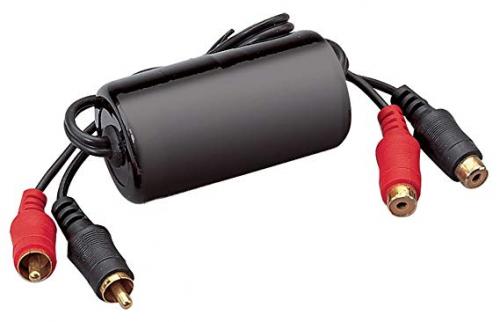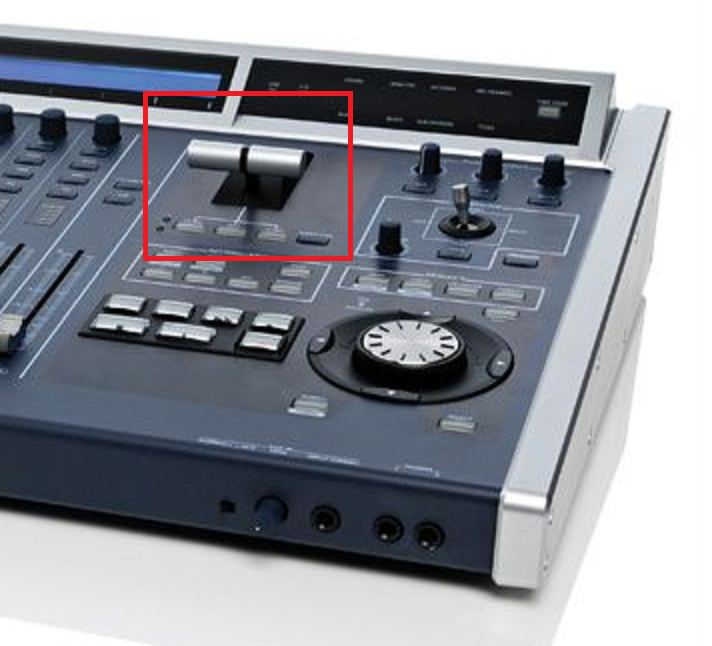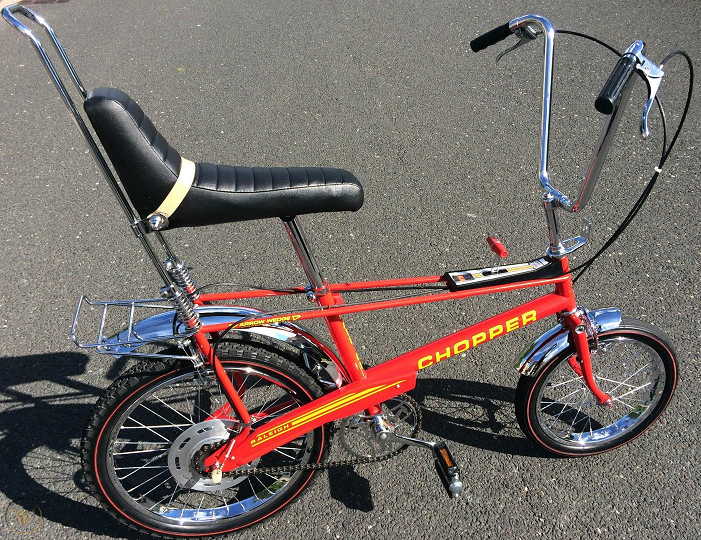-
Posts
7,191 -
Joined
-
Last visited
-
Days Won
39
Everything posted by msmcleod
-
You can convert your MIDI CC data (and also Pitch Wheel data) in the PRV to MIDI automation lanes, and back again if need be:
- 3 replies
-
- pvr
- cc controllers
-
(and 1 more)
Tagged with:
-
Yeah, this is a major issue for me. I use 5/4 and 7/8 all the time, and just can't use BIAB in these scenarios. Apparently you can use RealBand for this, but I've not taken the time to learn that yet!
-
Where it is makes it consistent with the current Delete effect position. It prompts you in any case, so you'll know if you select it by accident.
-

I broke the golden rule of upgrading...
msmcleod replied to dubdisciple's topic in Instruments & Effects
FYI - Kontakt 7 appears as "Kontakt 7.vst3" within my VST3 directory. -
The fact that it does it when playback is stopped / clicking around the screen leads me to think it's more likely to be a hardware/electrical interference / audio ground issue. I get this when using my onboard audio interface (I've always used the onboard graphics on an intel board). I solved it by using an audio isolating transformer between the audio output and my monitors: However, I've never heard of this issue using an external audio interface (I'm assuming your interface is an external and not a PCI based one?) ... so maybe it's something else. BTW - the isolation transformers do a great job, but I find they only last 3 - 5 years or so... not a huge issue as they're only around $10, but something to bear in mind.
-
Articulations are pretty low level, so if you send an aftertouch on message it doesn't automatically send an aftertouch off message unless you tell it to. You need two events in your articulation - one that sends the "on" message at the start, and another that sends the "off" message at the end.
-

When was the last time you used Cakewalk's X-Ray feature
msmcleod replied to jesse g's topic in The Coffee House
A friend of mine had a V-STUDIO 700, which had the T-Bar for controlling X-Ray. It was pretty cool, but always made me wish I had a Raleigh Chopper again... -
Just remember that Melodyne 5 doesn't work on Windows 7 - so I guess if you've got a >= 10th Gen Intel machine running Windows 7, you're completely out of options for Melodyne unless you upgrade both Windows and Melodyne.
-

Feature request - A possibility to have multiple BUS AREAS in Console View
msmcleod replied to orhor's topic in Feedback Loop
Take a look at the preset functionality in Track Manager (default shortcut is the "H" key) - you should be able to get similar functionality from that. Basically, it allows you to create a set of presets, on a per project basis, that show/hide whatever sets of tracks or buses you want.- 3 replies
-
- feature request
- buses
-
(and 1 more)
Tagged with:
-

Waves Scheps Omni Channel sidechaining not available
msmcleod replied to petemus's topic in Feedback Loop
I've only done a quick test, but I think it might be a bug in the plugin. I did eventually get it working though... I had to actually send something to the side chain, then play the project. As soon as a signal was detected on the side chain, suddenly the button started working, and I could switch it on and off. -
Normally you'd use an ethernet audio interface such as MADI or Dante. There are other solutions though - ASIOLink allows you to send audio over ethernet from one computer to another. I think some of the VBCable suite might do it too. You can also use shielded CAT6 cable as XLR cables as a cheaper alternative. Using a common ground, you can carry 4 balanced signals. Of course, that isn't using ethernet - just the cable.
- 28 replies
-
- 1
-

-
- firewire
- thunderbolt
-
(and 1 more)
Tagged with:
-

How to affect plugin accross multiple tracks?
msmcleod replied to Victor Flores's topic in Instruments & Effects
You can do this with a combination of groups and assignable controls: -
I've now got a D110, but for a long time, I used the CM-32L which is basically an MT32 with a much lower noise floor and without the display. It also had double the waveforms, and a bunch of sound-fx samples in the drum track. I later replaced it with a CM-64 which is the CM-32L and the CM-32P (a U110 with no display) combined. Having written editors for both, I'm sure you know that although the MT-32 / D110 share a very similar architecture, the PCM waveforms are different - so patches transferred between them will sound different. The CM-32L / CM-64 are great low noise alternatives to the MT-32, but you'll obviously need an editor to change anything. I believe the D5 is also basically an MT-32 with a lower noise floor.
- 22 replies
-
- cakewalk crashing
- tts-1
-
(and 1 more)
Tagged with:
-
I've got an MT-32 and I used to have a Sound Canvas. The MT32 is an 2nd generation LA synth, where very short attack samples are combined with an early version of virtual analog synthesis. The Sound Canvas is completely sample based. Although there are sounds in the Sound Canvas that have obviously been sampled from the D50 (a 1st generation LA synth), the MT32 and Sound Canvas sound very different.
- 22 replies
-
- 1
-

-
- cakewalk crashing
- tts-1
-
(and 1 more)
Tagged with:
-
What you're describing is latency. MME has the worst latency out of all driver modes. These are the driver modes going from best to worst: ASIO WASAPI Exclusive WASAPI Shared WDM MME There's a significant jump in latency between WASAPI Exclusive and WASAPI Shared so, if possible, record using WASAPI Exclusive when using an on-board device. You also want to make sure that your recording timer master is set to the device you're recording on within Preferences->Audio->Driver Settings. If your device doesn't support WASAPI Exclusive, then WASAPI Shared is probably your next best alternative. You'll need to live with the delay on the track in that case. This delay should be constant however, so you could consider setting one of your nudge amount settings to that delay amount, so it's quick to just select that clip and nudge it accordingly.
-
FWIW, all of my Scarlett's are gen 1... I've got the 2i2 (dev laptop), 6i6 (dev desktop), 18i8 (laptop) and 18i20 (studio). The 6i6 I use daily. I normally run with an ASIO buffer of 64 on production builds without issue, although for larger projects I may increase to 128 or 256. For development, I use 256. All of my Scarletts have the latest firmware (v1056). I've not had any issues with dropouts, unless I drive my PC beyond its limit... but that's a CPU limitation, not the Focusrite. On my 18i8, I've successfully recorded 16 simultaneous tracks whilst playing back 32 - and that was on a silent PC the size of an iPhone 5 running at 2GHz. Using my laptop, it copes with far more. I'd recommend trying a different USB port - it could be that it's sharing an IRQ with another device. Also, I know this doesn't work for some people, but I have my Scarlett plugged into a USB 3 port and have zero issues.
- 28 replies
-
- 1
-

-
- firewire
- thunderbolt
-
(and 1 more)
Tagged with:
-
It's easy if you say it properly: "wooster-shur" sauce Although a lot of people just say "wooster" sauce... I don't of course, because then I'd have to say, "I'm wrong"
-
You're misunderstanding what "Entire Mix" means in the context of source category. It doesn't mean "My entire project", it means "All selected tracks and buses as heard through the hardware outputs" - in other words it's the selection through the entire mix. If all you want "Entire Mix" (i.e., entire project) or "Selected Tracks/Buses", then just use the Export Module. I'll say it again: The Export Module is designed to give quick access to the two most common workflows, the Audio Export Dialog is far more flexible and is purposely based on selection. There is however a selection flyout section that allows you to change selection while you're in the dialog. CTRL + SHIFT clicking any track or bus's checkbox within the flyout will toggle between Select All / Select None. There're also the export tasks, which you can use should you be unsure about whether something is selected or not when you re-open the dialog. If you ensure nothing is selected, then create a task for an entire mix, exporting that task will always be the entire project regardless of selection.
-

Why is Melodyne folder not used for Melodyne transfers storage?
msmcleod replied to jesse's topic in Cakewalk by BandLab
If you're using Melodyne as a RegionFX, then you're using ARA. If you've got Melodyne in an effects bin, you're not. -
To be honest, I've had much better performance with USB 2 than with Firewire. I was hoping to have an mLAN system with 01X , 2 x i88x and 1 x ADA8000 to give me 32 tracks, but it gives up at 26 tracks. My RME Digiface USB however, quite happily copes with recording 32 tracks, whilst simultaneously playing back on all 34 outputs - and that's with an ASIO buffer half the size of what my mLAN system is (64 vs 128). Other things to bear in mind... 1. Firewire is a deprecated technology - certainly mLAN is completely discontinued. The chances of it working in future Windows updates/upgrades is diminishing. 2. The quality of converters in newer gear is far better than the ones used in older interfaces. The mic inputs on my i88x for example, are the same as the Yamaha DM2000, which was their top-end digital mixer at the time, but my Focusrite Scarlett 18i20 sounds so much better. Not to say they aren't good - they certainly are - but more modern converters are likely better.
- 28 replies
-
- 1
-

-
- firewire
- thunderbolt
-
(and 1 more)
Tagged with:
-
The way to do it without losing anything is: 1. Open up both projects in CbB 2. In the old project, select the tracks you want to copy over and save them as a track template 3. In the new project, insert that track template. 4. In the old project, copy special the tracks 5. In the new project, make sure the first track of the template is the active track, then paste special. After pasting, you may get surplus empty tracks at the end of your new project - just delete these.
-

Get Sonar Platinum stuff without Platinum installed?
msmcleod replied to Salvatore Sorice's topic in Instruments & Effects
FWIW SONAR Platinum itself only takes up about 250MB - everything else is in folders shared between CbB & SONAR. The exception is C:\Cakewalk Content\SONAR Platinum which is around 1Gb... but you can point SONAR to CbB's directory ( C:\Cakewalk Content\Cakewalk Core ) within SONAR's preferences and delete the SONAR one. You may find it easier to just have them both installed. -
I do know what you mean. I was seriously considering the Tascam Model 24 or Soundcraft 22 MTK, but both tap the signal to USB pre-EQ. This is fine (probably preferable) for live, but it doesn't fit my workflow - I want to sculp sounds before I record them. I ended up getting an Allen & Heath MixWizard WZ3 (£500 used), an RME DigiFace USB (£300) and 2 x Fostex VC8 ADAT converters (around £75 each used). So around £950 ($1100 US) altogether. The WZ3 allows you to configure whether the direct outs are pre-EQ or post-fader via jumpers, but mine was already configured post-fader. The MixWizard WZ4 with the USB card would have been another way to go, but 1. it was 2 x more expensive; 2. I've no idea how good the ASIO drivers are, and 3. The USB card has now been discontinued. The biggest advantage of my current setup is that it actually supports 32 channels I/O and it's all modular. So I've also got my old Focusrite 18i20 as an additional 8 inputs, and a bunch of hardware pre's using up the final 8 channels through an additional VC8. The VC8's are probably the weakest link in the chain, but I'm free to upgrade them if I need to.
- 28 replies
-
- firewire
- thunderbolt
-
(and 1 more)
Tagged with:
-
I wouldn't say no hope, but it's likely to be significant effort, with a good chance of failure. For me, even with detailed instructions on how to get mLAN working on Windows 10, it took literally days to get it to work on a laptop. In the end, I did get it working on Windows 10, but the BSOD on shutdown meant that every time I reboot into Windows 7, it does a chkdsk on all the drivers. You also want to make sure you backup an image of your OS before you start anything, as things don't always uninstall properly and can invalidate a new install... so every time it doesn't work, it's a case of restoring your disk from your backup and starting again. In the long run, it may be easier to just get a multi-track USB mixer - I've heard good things about the Soundcraft Signature 22 MTK, Tascam Model 12/16/24, and I think Zoom & Korg also do one.
- 28 replies
-
- firewire
- thunderbolt
-
(and 1 more)
Tagged with:
-
I still use a Yamaha 01X / i88X and Behringer ADA8000 one of my Windows 10 rigs using mLAN over firewire. The legacy drivers worked fine on Windows 7, but not for Windows 10 - I'm using the standard Windows firewire drivers on Windows 10. Also, Windows 10 has to be run constantly in test mode, and driver signature had to be disabled during install. The biggest issue I had was finding a compatible firewire card - the Belkin F5U502 using the TI chipset works best for me with mLAN on a desktop. I've yet to find a laptop firewire card that works at all, although I did have some success with the onboard Ricoh card in my Dell Vostro 1700. The onboard interface works 100% on Windows 7 32 bit, but I get a BSOD on shut down on Windows 10. The second biggest issue was the MIDI ports all coming back with the same name. It required manually changing the names in the registry. In saying that, on my desktop it's now running like a dream on Windows 10.
- 28 replies
-
- firewire
- thunderbolt
-
(and 1 more)
Tagged with:





